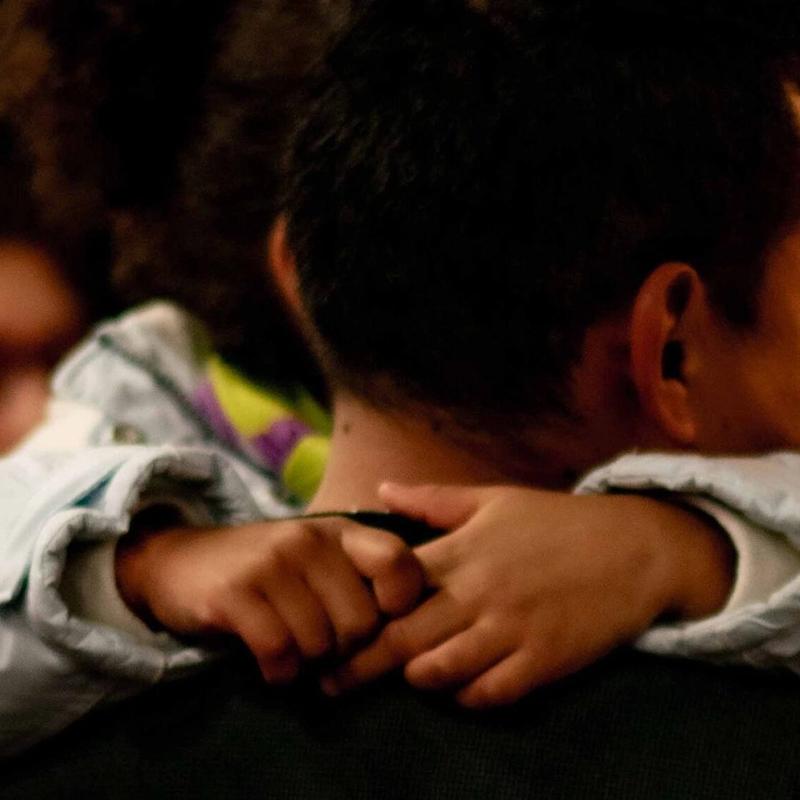Children can experience trauma from a variety of experiences, including neglect, death of a loved one, bullying, racial trauma, sickness, and physical, sexual, or psychological abuse, to name a few. Trauma occurs when children are exposed to an experience perceived as threatening or harmful and respond with intense fear that affects them physically, emotionally, and spiritually.
The compassionate and helpful response of parents or caregivers can help children who have experienced trauma to access spiritual, emotional, and physical healing. Helping children feel connected and loved, giving them opportunities to express what they’re feeling, providing any necessary professional care, and being patient with behavioral outbursts will all go a long way toward helping children heal. Knowing that God sees, cares for, and understands their suffering will help a traumatized child move forward in their healing. Reminding them that one day all pain and suffering will cease can help turn their minds away from anxiety about future trauma and toward promised future peace and joy.
As we react with shock and horror to the many ways in which children suffer trauma, we should be driven to step into these children’s lives, tangibly demonstrate God’s love, and protect them. God’s deep love and concern for children should spur us to imitate His tender care for them and to offer them hope and a sense of safety.
How amazing it would be for children who have experienced trauma to find healing and hope in their families and church communities:
“How a community responds to individual trauma sets the foundation for the impact of the traumatic event, experience, and effect. Communities that provide a context of under- standing and self-determination may facilitate the healing and recovery process for the individual. Alternatively, communities that avoid, overlook, or misunderstand the impact of trauma may often be re-traumatizing and interfere with the healing process. Individuals can be re-traumatized by the very people whose intent is to be helpful.”[1]
While the specific responses children need will vary, there is a wealth of general advice to help parents and caregivers respond well and help children heal. The following recommendations are geared toward situations where the traumatic event has ended and children are in a reasonably safe environment.
- Provide children with safety and reassure them that they are safe. Give them examples of what you have done to help protect them at home or school. This might include walking them to their classroom every day, remaining within earshot whenever you’re at home, watching them play outside so they’re not alone, and waiting for them at the entrance of the school or the bus stop to pick them up.
- Help children feel connected and loved. Tell and show them you love them and will try your best to take care of them. This includes being emotionally and physically available (hugs, time together as a family, etc.). Reassure children it is normal to have a lot of different or strong feelings after a traumatic event.
- Let children know that what happened was not their fault, and be an attentive and nonjudgmental listener. Allow children to process their experience and express their feelings. This could mean helping children find words or encouraging opportunities for them to express themselves through talking, writing, playing, music, or other activities. Do not be dismissive of their feelings or encourage children to simply get over them.
- Pray with children.
- Provide professional care for children when needed. This includes, therapists, Child Protective Services workers, mental health professionals, victim-witness advocates, school guidance counselors, or social workers.
- Provide professional investigators when appropriate. This includes informing the authorities when there is known or suspected child abuse.
- When children are upset or exhibiting strong emotions, try to respond calmly rather than react in anger. Remain supportive, speak in a steady and reassuring voice, and acknowledge their feelings. Try not to take children’s behaviors personally. Remember that children may be engaging in responses that feel automatic to them or that they feel powerless to control, and the behaviors may have protected themselves or others during the traumatic event(s).
- Return to usual routines, when possible and still helpful. These might include mealtimes, school, weekend activities, or bedtime routines. Try to be consistent, such as picking children up on time and letting them know in advance about any changes.
- Give children some control in daily activities, appropriate to their age and developmental stage. Allow them to make some choices about clothes, meals, etc.
- Encourage children about their security in Christ. If they have faith in Christ, their identity is secure and robust. God conveys value on his children by reminding them that they have been adopted into his family. This identity goes deeper than any of their wounds. This truth brings great relief, because they are not doomed to live as victims of trauma. It doesn’t eliminate their wounds nor silence their cries for deliverance or healing, but it does mean those wounds are not the final word on who they are.
- Engage the feeling of anger. God’s anger against sin and its effects is justified. That God is angry tells us something important: “Anger can be utterly right, good, appropriate, beautiful, the only fair response to something evil, and the loving response on behalf of evil’s victims.”[2] God’s people can also express godly anger: “Be angry and do not sin” (Ephesians 4:26). Telling children that God is angry when they experience trauma can be encouraging.
- Offer hope. Rather than being simply a desire for a particular guaranteed outcome, hope is characterized by certainty in the Bible. Hope is sure because God is behind the promise, and he has provided faithfully in the past to his people. The hope you need right now borrows from God’s faithfulness in the past and anticipation of it in the future. The basis you have for hope is the resurrection of Jesus from the dead.
As you seek to care for the children in your midst who are dealing with trauma, or to help others care for these children, I would encourage you to remember that you are not alone and God will have the final say. One day, he will put all things right. Until then, it is our privilege and calling to provide safety, comfort, and hope for those afflicted, and to walk patiently through this process with them as individuals made and beloved by the God who created the universe and holds it in his hands.
[1] Substance Abuse and Mental Health Services Administration, Trauma and Justice Strategic Initiative, SAMHSA’s Concept of Trauma, 17.
[2] David Powlison, “Anger Part 1: Understanding Anger,” The Journal of Biblical Counseling 14:1 (1995), 40.







